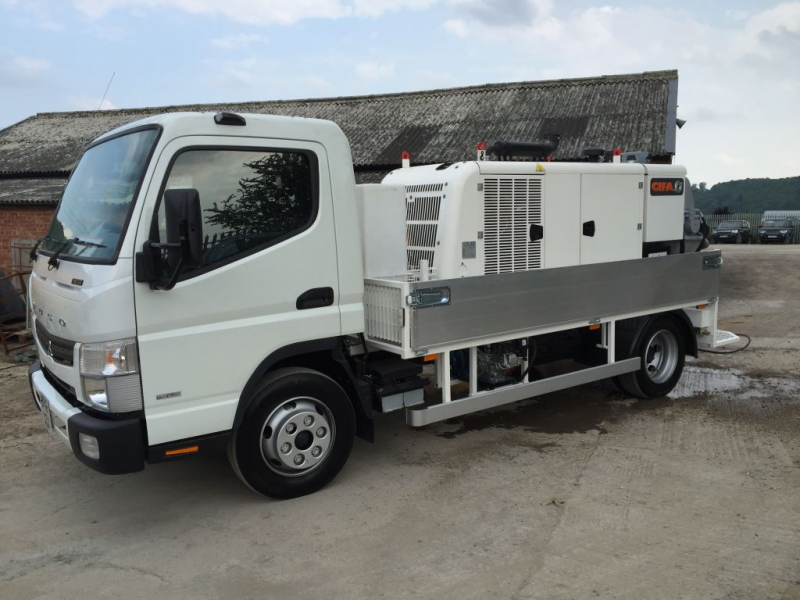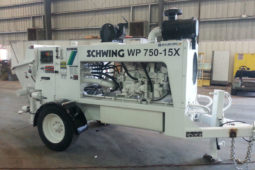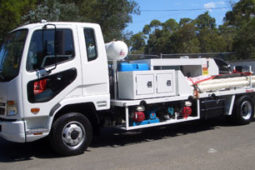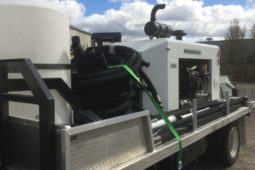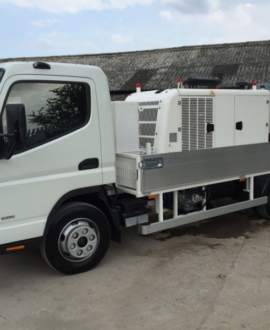JDS CONCRETE PUMP HIRE
JDS Concrete Pumping specialise in ready mix concrete & concrete pump hire available for same day / next day delivery in the Barking and surrounding areas. Concrete pumps are the only way to get your concrete exactly where it needs to be efficiently, safely and cleanly. Every concrete delivery from JDS includes a fully trained pump operator, ensuring that your concrete pour gets done on time and with the minimum of fuss.
We are able to deliver concrete to restricted access areas up to 100 metres away around obstacles, through narrow gaps and horizontally and vertically.
Contact Us today fore a free no obligation Quotation.
ONLY PAY FOR WHAT YOU USE!
SAME DAY / NEXT DAY CONCRETE DELIVERY.
GET A FREE QUOTATION
Fill Out the quick contact form and we’ll get straight back to you!
Book exact time slots
Same Day / Next Day Availability
Only Pay for what you use.
Restricted Access Specialists
Our Services
We are a volumetric concrete supplier, which means that our customers only pay for the concrete they actually use. This is because our fleet of volumetric concrete mixers enables us to batch the exact quantity and mix design of concrete that you require on site, so that there is no waste.
Screed Pumping
We are able to deliver concrete to restricted access areas up to 100 metres away around obstacles, through narrow gaps and horizontally and vertically.
read more→Concrete Pump Hire
We are able to deliver concrete to restricted access areas up to 100 metres away around obstacles, through narrow gaps and horizontally and vertically.
read more→Ready Mix Concrete
We are able to deliver concrete to restricted access areas up to 100 metres away around obstacles, through narrow gaps and horizontally and vertically.
read more→Latest News
Special Offers Coming Soon!
Global leaders in marine container transport, create and use practical tools for measuring
learn more→24/7 Concrete Pumping Services
Global leaders in marine container transport, create and use practical tools for measuring
learn more→New Concrete Pumping Delivery Service in Barking
Global leaders in marine container transport, create and use practical tools for measuring
learn more→
FAQ
Some advantages for using a pump truck to place your concrete are; the pump truck can reach over houses and into backyards, a pump truck can pump concrete up 2, 3, 4 floors and more, pump trucks place the concrete right where you need it, pumping concrete is fast which saves on labor cost, pumping the concrete reduces the amount of manpower you need to place the concrete.
If you’ve ever wheelbarrowed 10 – 20 yards of concrete over a long distance or used a concrete powerbuggy to place a 100 yard slab, you know exactly what I mean. You know why it makes sense to use a concrete pump truck.
The simple answer to “how concrete pumps work” is, a concrete truck discharges its concrete into a hopper on the back of the pump truck. The hopper has a mesh grate the concrete falls through which prevents any large rocks or chunks from plugging the pump truck hoses. The hopper also has an auger that churns the concrete keeping it liquid and flowable.
Once the concrete is in the hopper, it gets sucked into a valve system in small intervals or strokes. As some of the concrete is being sucked into the valve, the concrete before it is being simultaneously pushed through the concrete pipe on the pump truck boom until it reaches the end of the concrete hose and placed where you need it.
Some concrete pump trucks have different types of valve systems, s-valves, ball-valves, but basically that’s how a concrete pump works. As long as the hopper stays full and there are no blockages in the concrete hoses, the process of pumping the concrete goes quite smoothly.
Having a good concrete pump truck operator is also very important. Their experience and wisdom is key to handling any problems that may occur, fixing them, and keeping the pour going.
To be a good concrete pump operator, it takes a very special person who has some great character traits. Operating a concrete pump truck requires a lot of responsibility to make sure everything goes smoothly.
A concrete pump operator’s job is very demanding, both mentally and physically. He or she has to be a leader, a self starter, and a self motivator. A pump truck operator has to get up very early in the morning to be at the job-site and all set-up before the concrete arrives.
Pumping two or three jobs in a day and working twelve to fourteen hours a day aren’t out of the ordinary when business is good. This means good concrete pump operators need to know how to do many things well.
What to look for in a good concrete pump truck operator:
- A Good Truck Driver – Most of these pump trucks are very big, a good concrete pump driver has to be able to maneuver his pump truck in very confined areas.
- Safety Awareness – Pump truck operators always have to be concerned about safety, if something goes wrong someone can get hurt very quickly. If a hose kinks or becomes plugged everyone needs to know what to do so nobody gets hurt.
- Concrete knowledge – Good Pump operators have some knowledge about concrete mix designs. Which concrete mixes pump easier, Why a concrete mix is pumping hard today, what effect adding water to the mix has, what effect hot or cold temperatures have on concrete mixes, what effect adding accelerators to the concrete mix has, all things a pump operator should know.
- Electrical & Hydraulics Experience – Being able to fix the mechanical, electrical, and hydraulic systems on the pump truck are a must. The newer pump trucks and concrete pumps are very technologically advanced and complex. If something breaks down, the concrete pump operator needs to know how to fix it fast. That concrete won’t stay in liquid form for very long!
- Can Make Good Decisions Quickly – Deciding where to set up the pump truck, how to lay and hook up the concrete hoses, where to start the pour, how to complete the pour and how to proceed when a problem occurs are all decisions a concrete pumper need to be able to make.
- Care When Cleaning Up – Cleaning out the pump truck and hoses on the job-site requires special attention. A pump operator that thoroughly cleans his truck and keeps the washout mess on the ground to a minimum, cares about what he is doing.
- About 2 billion tons of concrete is produced per year.
- The oldest piece of concrete on record is 12 million years old. Discovered in Israel in the 1960s, it’s a natural deposit created by oil shale combusting near limestone.
- Concrete was used by the Ancient Egyptians as infill material in the pyramids of the Giza Necropolis.
- Located in Rome, the Pantheon is the largest unreinforced (no metal frame) concrete dome in the world. It was built in 120 A.D.
- Thomas Edison held 49 patents relating to concrete and experimented with precast concrete houses and furniture.
- The first American concrete ship, a steamer named the S. S. Faith, was launched March 18, 1918. She cost $750,000 to build.
We were previously using an unreliable company that messed up orders and didnt turn up. Then we found JDS Concrete Pumping and the control came back to us.
Steve McDonald
I’ve been happy with the services provided by JDS Concrete Pumping. Very Effiicient, they return my calls quickly and answered all my questions and our concrete was delivered a few hours later!
Anna Briggs
This is due to their excellent service, competitive pricing and customer support. That’s becoming so distant and digital, it’s throughly refreshing to get such a personal touch.


